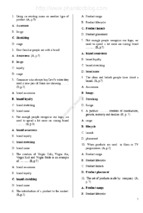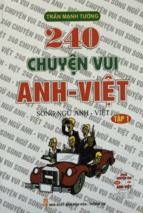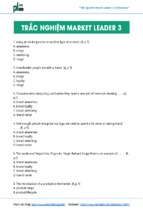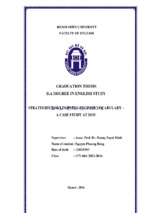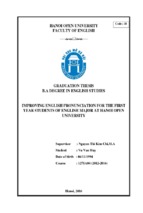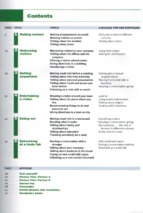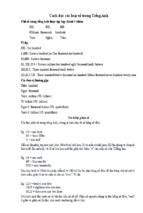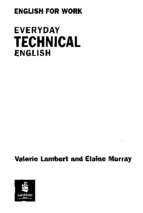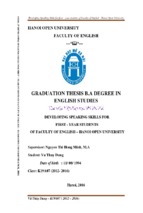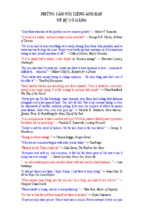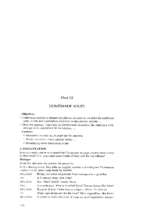Essentials of
Human Resource
Management
Fifth edition
Shaun Tyson
AMSTERDAM • BOSTON • HEIDELBERG • LONDON • NEW YORK • OXFORD
PARIS • SAN DIEGO • SAN FRANCISCO • SINGAPORE • SYDNEY • TOKYO
Butterworth-Heinemann is an imprint of Elsevier
Contents
Preface
Acknowledgements
Part Two
The behavioural bases of human
resource management
1
1
2
3
Part One
vii
xi
3
21
42
Individual differences
Groups
Organizations
The developing strategic role of
human resource management
4
5
6
From personnel management to HRM: how did this
field of work develop?
Human resource strategy
Human resource planning
Part Three Recruitment and selection
7
8
9
Part Four
Job analysis: defining effective performance
Recruitment
Selecting employees
Assessing performance and
developing people
10
11
12
Induction
Assessing performance potential
Training and development
59
61
84
107
125
127
143
161
181
183
192
214
vi
Part Five
Contents
Rewards
13
14
15
Part Six
Job evaluation
Pay and benefits
Conditions of service
Industrial relations
16
17
18
19
20
21
22
The history and development of trade unions
Collective bargaining
Negotiation techniques
Disputes and ways of resolving conflict
Consultation and participation
Employment law: institutions and contracts of employment
Employment law: managing employment relationships
Part Seven Epilogue
23
The contribution of HRM to organizational performance
243
245
263
298
325
329
341
357
367
381
391
421
445
447
Appendix 1
Appendix 2
451
453
Index
457
Preface
Human Resource management has grown in its range and depth to the
point where it has become an industry rather than just an occupation.
This Fifth Edition of a book aimed at explaining the main areas of the
field has grown in each edition, expanding with the scope of the topic
to the point where even a summary of the topic is a large tome. In each
succeeding edition we find new ideas, new techniques and new legislation to describe. There is however, no diminution in the volume of
existing material because all is still relevant. It is necessary to know how
we have come to our present situation in order to understand where
we are going, and the trends which are continuing. HRM is highly situation specific, the context is infinitely variable and there are endless
applications.
Part of the joy of working in HRM is the significance of the work that
we do in this field, to help people and organizations to adjust to the
massive social, economic, political and technological changes that
influence the way people are managed.
The pace of change is such that we must acknowledge wider forces
affecting people management. Environmental change, increased security risks, demographic changes, the rise of new economies such as
China, India and Brazil, and the expansion of the EU are some of the
obvious global pressures. The social changes we can all list include
shifts to values and lifestyles, families, education and health. What at
one time might have seemed remote from HRM is now central to our
work. Global, social and political changes affect all economic activities,
through marketing opportunities and threats, affecting employment,
costs, productivity and the social climate of relationships.
New ways of working and organizing, such as flatter, more devolved
organization structures, the burgeoning range of networks, whether
viii
Preface
technological, inter-organizational, intra-organizational, or personal,
and global ownership with international activities as a norm have
affected HRM. The HR functions in organizations are smaller and
more often linked to a wide range of service providers and sometimes
with the transactional activities outsourced. The HR role is diffused
throughout organizations, with new job titles reflecting the significance of change management and talent management.
Not in spite of, but because of, these trends, there is every sign that
HRM as an activity is itself becoming widely distributed. There is convergence in practices for example, between the public and private sectors,
and across national boundaries. Information flows are so fast the standard for communications is now instant, via electronic means, that the
latest ideas on the HR field are transmitted within seconds. There is transparency in areas such as pay and benefits, labour market data, recruitment opportunities and working trends. The world of the business of
HRM is mature, expanding and mainstream to all managerial activity.
These trends and changes would be sufficient justification for the
Fifth Edition of this text alone. The need for this kind of text continues
because whatever the discontinuities arising from the new challenges,
people management in all its aspects builds and develops from tradition and techniques. New cases and legislation in the field amend and
marginally reconfigure regulations, with our understanding of the
human condition comes a slow accretion of knowledge which is represented in the continuing traditions in techniques and approaches,
such as in selection, job evaluation, reward, training, development and
in industrial relations. The people working in this field are developing
knowledge and techniques as they face new problems, as communities
of practitioners.
The latest edition of this text seeks to bring together the main fundamental knowledge of areas of human resources, from organizational
behaviour to people management, industrial relations and employment
law. These are explored from the perspective of the current and emerging context of HRM and the latest techniques in managing people.
The themes of continuity and change are supported by the genesis
of this book, when Alfred York, the original co-author and I sat down
together to blend our joint knowledge and interests as a foundation
for the book, with John Milton’s words in mind:
‘Where there is much desire to learn, there of necessity will be much
arguing, much writing, many opinions; for opinion in good men is but
knowledge in the making.’
Our desire to write the book was born as much out of a desire to learn
as the intention to communicate ideas and understanding.
Preface
ix
That desire continues, because with each new edition, come revisions and new ideas. The field of HRM is one where there are new techniques and fresh concepts by the bucketful, and where no book can
completely do justice to the topic.
This book is intended for anyone who wishes to find a comprehensive guide to the subject, grounded in the principal theories and concepts, with the authority of a long term perspective and a focus on the
latest techniques and practical ideas.
Later in these introductory pages I acknowledge my debt to Alfred
and to Jayne Ashley who over many years and editions have worked on
this book with me. In the ideas and perspectives found here, we hope
our readers will find ‘knowledge in the making’.
Shaun Tyson
This page intentionally left blank
Acknowledgements
We wish to acknowledge with thanks the permissions to reproduce the
material from the following works, granted by the publishers and
authors:
The model of strategic change and human resource management,
granted by Chris Hendry and Andrew Pettigrew, and by Routledge and
John Wiley, originally published in the International Journal of Human
Resource Management (1990) 1 (1) 17–44, and in the British Journal of
Management (1992) 3 (3), 137–56.
The model of HRM from Human Resource Management: A General
Managers Perspective by Michael Beer, Bert Spector, Paul R. Lawrence,
D. Quinn Mills and Richard E. Walton. Reprinted with permission
from Professor Michael Beer.
Ashkenas, R, Ulrich, D., Jich, T. and Kerr, S., copyright © 1995. The
Boundaryless Organisation. Jossey Bass. Reprinted with permission of
John Wiley & Sons, Inc.
The cohort analysis from Manpower Planning in the Civil Service (1972),
Table 5.1, Crown Copyright, which is reprinted with the permission of
the Controller of Her Majesty’s Stationery Office.
The table entitled Changes resulting from the impact of technology
from The Future of Work by Ward (1990) in Anderson J. and Ricci, M
(eds) Society and Social Science. Reprinted with the permission of the
Open University Press.
The panel entitled Demographic changes and the workplace:
Implications for HR. Reprinted with the permission of SHRM
2004–2005 Workplace forecast: A Strategic Outlook published by the
Society of Human Resource Management, Alexandria, VA.
Boston Consulting Group Matrix – Boston Consulting Group –
Reprinted with the permission of the Boston Consulting Group.
xii
Acknowledgements
Kraft Foods Vision Statement – Reprinted with the permission of
Kraft Foods.
Cadbury Schweppes Mission Statement – Reprinted with the permission of Cadbury Schweppes.
The dynamics of the stress process (p. 310) – Reprinted with the permission of Resource Systems Limited.
Keith Cameron for permission to quote his chart on commission
schemes and to publish his format of a flexible reward system.
British Aerospace (for a description of their BEST management
development programme objectives) and Standard Life (for a description of their contribution management system).
I wish to express my thanks in particular to Michelle Chamberlain,
Practice Lawyer, of Eversheds LLP for her helpful comments and
advice on the employment law chapter.
This book is a revised text, and much of the original remains. Whilst
completing these revisions I have been conscious throughout that my
old friend Alfred York was my original co-author. Sadly, ill health has prevented him from continuing in this role. Nevertheless, as I brought this
edition up to date, I was conscious that Alfred’s ideas and personality are
imbued in the heart of the book. He is a person whose intellect and life
experience have reached ‘renaissance man’ proportions, having been a
naval officer during the second world war, and RAF officer after the war,
a classics scholar, a linguist, an academic and a management consultant.
I hope this book will be a continuing testament to his genius.
There is a second great debt of gratitude owed. The book would not
have been realised without the professional diligence of Jayne Ashley.
Her good humour, her painstaking and tireless attention to the manuscript have made the whole project possible.
I am also grateful for the patience of our publisher, Maggie Smith of
Elsevier, who has been a constant source of encouragement.
Any errors or omissions remain my responsibility alone.
Shaun Tyson
Cranfield Bedfordshire
P A R T
O N E
The behavioural bases
of human resource
management
In this part of the book we provide a general background for all the
subsequent chapters on specific aspects of human resource management (HRM) policies and practices. Since work and its management
are human activities set in motion, carried out, supervised, monitored
and assessed by people who are constantly interacting with each other,
human factors are crucially important. Nevertheless, managers do not
always act as though they fully understand and acknowledge that success in management has to be based on an awareness and at least a
broad knowledge of human behaviour, including, of course, their own.
For the last 100 years there have been studies of the behaviour of
people, and in particular of the special kinds of problems that modern
working life creates. These studies are described collectively as the
social sciences and include contributions from specialists trained in a
variety of disciplines, particularly in the different branches of psychology, sociology and economics. In times of increasing academic specialization we need to remind ourselves that the situations themselves have
no such specialized distinctions. The value of the various specialisms
lies in the difference of emphasis and perspective that they give in
looking at the same situations, and hence in providing a broader
understanding of their nature.
2
Essentials of human resource management
In this preliminary phase of the book we are setting out to make a
systematic survey of the important areas covered by research into the
behaviour of people at work, which is, of necessity, no more than an
outline. Apart from providing a necessary background for the main
subjects of the book it will also, hopefully, indicate areas where further
study may usefully be made.
C H A P T E R
1
Individual differences
Human beings share certain common features, such as physical and
mental characteristics. These attributes, which link all the members of
the species, produce common patterns of behaviour. Thus, all humans
have physiological and basic needs mainly concerned with survival:
needs for food, shelter, security, reproduction, affection, group membership. Unlike animals, humans also reveal a higher range of needs,
concerned with making sense of what might otherwise be a meaningless
world. These needs show themselves in the form of exploratory, creative
and self-fulfilling activities of many and varied forms. In consequence, a
common feature of all human behaviour is that it is goal directed, as the
members of the species are driven to satisfy these needs.
At the same time every individual is the product of a unique combination of genetic and environmental factors. Apart from the exceptional circumstance of identical twins, every human is physically distinct
from all other humans at birth. Thereafter, everyone is subjected to a
unique pattern of environmental influences, produced by the accumulative and distinctive features of a particular family, sex, region, race,
education, religion, epoch, etc. This is a constantly changing process
with the result that all of us are being continuously shaped and modified by new experiences and new relationships.
The differing factors of heredity and environment produce an individual uniqueness that has important consequences.
As we grow physically and develop mentally, and join in, so to speak, the
general human process of satisfying needs and making sense of the world,
we are subjected to the socializing influences of other people with whom
we have most contact, in the family, at school, at church, for example, and
in the larger society to which we belong. During this time we are also
developing emotionally, getting in touch with our feelings and learning
how to control them. As a result of these influences we acquire attitudes,
values and expectations which shape our behaviour towards other people
and strongly affect judgements and decisions about goals to pursue. When
our beliefs have no rational basis, they may also be described as prejudices.
4
Essentials of human resource management
Chapter 1
The condition of common human similarity and individual dissimilarity has a significance for the problems of interpersonal relationships
and hence for human resource management. Information received by
individuals from the external environment is processed according to
their personal backgrounds, and the results are used as a basis for
judgements, decisions and actions. In the course of everyday relationships there is a general tendency either to assume that other people see
and interpret the world as we do or to expect that they should do so.
The importance of understanding the effects of individual differences on interpersonal relationships is not so much that assumptions
and expectations about the behaviour of others will be eliminated or
modified – although the possibilities of this will, no doubt, be
increased. It is, rather, that we should have a framework for making as
accurate an analysis as possible of our own and other people’s behaviour. This will lead to a greater insight into people management issues,
and hence may improve the quality of our interpersonal relationships,
because we understand that reality is not absolute but is determined by
individual perception and interpretation. In practical terms, this
means that we may be less likely to become confused, frustrated or
angry when the behaviour of others does not appear to match our own
assumptions or expectations of what it should be. We are also correspondingly less likely to be impelled to explain the apparently odd or
unreasonable behaviour of other people by ascribing our own reasons
and motives, e.g. stupidity, spite, jealousy, obstinacy, lack of interest.
This kind of insight and understanding is most important as a basis for
studying specific areas such as communication, motivation, group and
organizational behaviour, and leadership.
Self-awareness
The need for and importance of self-awareness has been recognized
since the earliest times. The injunction ‘Know thyself’ was apparently
written in gold above the portico of the Temple of Apollo in ancient
Greece. Robert Burns addressed the same theme when writing: ‘O wad
some power the gift tae gie us, to see oursels as ithers see us’.
An understanding of one’s own capabilities and limitations in terms
of knowledge, skills and personal traits is especially important in work.
The more insight managers have into their own behavioural traits and
the effects on the members of their groups, the more effective they are
likely to be, and the less likely they are to alienate the very people
they should be motivating. As managerial styles have become more
democratic or participative and less authoritarian so employees are
Chapter 1
Individual differences
5
Known
Others
Not known
Public
Blind
Not known
Self
Known
Hidden
Figure 1.1
The Johari window
encouraged more than ever before to assess themselves in terms of
employment suitability, career paths, work performance and developmental and training needs.
There are two views of individuals. There is the view that individuals
have of themselves, and there is the view that other people, who have seen
them in various situations, have of them. Obviously, there may often be
some divergence in these views. The view of self may conflict with the
views others have of us. There may be differences among the external
assessors. The main possible variants in assessing individual behaviour
have been summarized in the model known as the Johari window (Figure
1.1), named after its psychologist authors, Joe Luft and Harry Ingham.
The window in Figure 1.1 has four panes, described as follows:
1
2
3
4
Known to self and to others (public), e.g. I know that I am lazy
and other people think so too.
Known to others, but not to self (blind), e.g. I think that I am
a caring, sensitive person. Others do not see me in this way. I
am not aware that others hold a different view.
Known to self, but not to others (hidden), e.g. I know that my
lack of moral courage is a major weakness. Apparently others
are not so aware of this problem.
Not known to self and not known to others, e.g. I am a poor
judge of people. I do not realize this and neither do others who
know me.
How should self-aware people be
described?
They realize that their behaviour affects others and that they may need
to change in order to achieve effectiveness in performance and human
6
Essentials of human resource management
Chapter 1
relationships. They take active steps to obtain feedback about their
behaviour and performance. They take particular note of any consensus of external views, especially when these diverge significantly from
their views of self. They have reached as honest and balanced a view of
themselves as is humanly possible.
All this, of course, is very much easier said than done. In real life we
find it much easier to list our perceived strengths than our weak points.
We do not like unpalatable home truths. We generally prefer to judge
other people rather than ourselves. Paradoxically, the achievement of
self-awareness depends on awareness of the need for, and importance
of, self-awareness in the first place. The person who occupies windowpane number three in the Johari window may find it very difficult to
move to windowpane number one for the very reasons that placed him
or her in pane number three.
When we are dealing with questions concerning individual differences
it is useful to consider if we are discussing differences in personality.
According to Fonagy and Higgitt (1984): ‘A personality theory is an
organised set of concepts (like any other scientific theory) designed to
help us to predict and explain behaviour’ (p. 2). The theories are
intended to be logical frameworks for integrating observations about people, and should help to produce new ideas to explain and understand
behaviour. Personality theories describe the characteristic ways in which
individuals think and act as they adjust to the world as experienced. These
include genetic and unconscious factors as well as learned responses to situations. Often personalities are described as a series of ‘traits’.
Carl Jung defined the personality traits which emerged from his
ideas in his theory of individual differences, chief among which were
the overall attitudes of ‘Extroversion’ and ‘Introversion’. These traits
help to explain how an individual sees and understands the world, how
the person processes information and makes decisions, which depends,
Jung argues, upon the person’s thinking, feeling, sensation and intuition.
These ideas have been popularized by the widespread popularity of the
Myers Briggs inventory which can be used in occupational guidance,
management development and career development.
In HRM, questions about the appropriateness of ‘specific traits’ or
attributes are frequently raised in selection and assessment decisions.
We discuss psychometric tests later in the book, but we should note here
that researchers have identified a variety of personality traits. There
is evidence that the many individual-specific traits, such as ‘warmth’ or
‘unreliability’, can be subsumed under what are known as the ‘Big Five’
dimensions of personality, these being extroversion, neuroticism, agreeableness, conscientiousness and openness to experience.
Chapter 1
Individual differences
7
These dimensions can be defined as follows:
1
2
3
4
5
Extroversion: extroverts tend to be sociable, relate themselves
readily to the world around them.
Neuroticism: view the world as a frightening place. Neurotics
have anxieties and are self-conscious.
Agreeableness: the ability to care, to be affectionate.
Conscientiousness: careful, scrupulous, persevering behaviour.
Openness to experience: these people have broad interests, are
willing to take risks.
These attributes are scales in themselves, for example, extroversion–
introversion, neuroticism–stability, and the balance will be a mixture of
positions for any individual, along the five continua.
Many researchers such as Raymond Cattell have emphasized that personality is not totally fixed. On the contrary, we are able to adapt and to
change according to the situations we face, although it is anticipated any
changes in behaviour would be consistent with our personality overall.
The answers to the questions that an analysis of self should provide
can only come from the evidence of past and present behaviour.
Actions speak louder than words. An analysis of the individual for purposes of self-awareness requires an investigation that is much the same
as that which takes place during the effective selection interview or performance appraisal discussion. It requires discipline and a system. The
evidence of the individual’s abilities, potential, strengths, weaknesses,
values, attitudes, motivation, likes, dislikes, personality traits, etc., is
likely to be provided from the following sources:
■
major influences in life such as family, education, religion,
work, social life, study and reading, spare-time interests and
travel
■ life history in terms of achievements and decisions.
Individuals can carry out this investigation for themselves, but the process
is considerably enhanced with the help of another person who has the
counselling and investigative skills needed to ask relevant, probing and,
at times, awkward questions in a friendly, helpful, but firm manner.
Communication
The problems that human individuality poses for interpersonal relationships lead logically to a study of communication. This may be seen as an
extension of the study of the nature of individuals and their relationships
8
Essentials of human resource management
Chapter 1
with each other, the problems that human individuality creates and the
extent to which these barriers can be reduced. Communication is a flow
of information which humans use to pass messages and intentions to
each other, therefore it follows that no collaborative human action can
take place without it.
Since pleas for improved communication are constantly voiced, it
would be useful to pause for a moment to discuss its essential nature.
Although the process is subtle and not easy to simplify, it is useful to
think of communication as it is applied to telegraphy, where a message
is encoded by one person, transmitted over a certain wavelength and
received and decoded by another. For the message to be received and
understood as the transmitter intended, a number of conditions have
to be fulfilled:
1
2
3
Both sender and receiver have to know the code.
They have to use the same wavelength.
There has to be the minimum of interference.
This simple analogy emphasizes its essential nature – it is a two-way
process and to be effective the intended meaning of the sender has to
be received in as near an uncontaminated state as possible by the
receiver. This basic prerequisite is not always understood in practice.
Sometimes when managers speak about improved communication,
they really mean turning the volume up, or sending more or different
kinds of messages without any thought for the receiver.
It is common to think at first of human communication as taking three
forms, i.e. spoken face to face, or written or e-mailed messages from a distance, or spoken messages from a distance. In all these situations there is
an emphasis on the use of words and their meanings. Of course, language
is the basic form of human communication and here the slant of the message will be affected by the choice of words and their juxtaposition, and
the tone of voice when the language is spoken. However, communication
may involve all the senses. As most of us are aware, there has been a
marked growth of interest in non-verbal behaviour. The significance of
non-verbal messages can be readily illustrated if we think of a telephone
conversation and the difference between a situation where only the voice
can be heard and another where both people are speaking face to face.
We usually have to be much more careful when speaking on the telephone, where there is no opportunity to show by a twinkle in the eye or a
smile that a remark is not meant to be taken too seriously.
The encoded communication signal is a combination of elements,
comprising words used in particular ways, accompanied by expressions
in the eyes, facial expressions, gestures and body postures, all of which
Chapter 1
Individual differences
9
contribute to the total meaning and the complexity of the message. Given
the prevalence of e-mail, electronic communication is probably the most
normal method of the interaction now. It is most important, therefore, to
realize that when we send messages to other people the code, so to speak,
is very much determined by the influences of the individual’s heredity
and environment. Our attitudes, value systems and expectations all contribute not only to the way a message is sent, but also to the way in which
it is received. Receivers will decode information in the light of their individual perceptions of the world. Short of being able by some miraculous
means to change identities with another person, there is no way that we
can accurately check how other people receive our meanings. Nevertheless, we have to make the best of an imperfect world and, since communication is vital to effective management, we need to seek every possible
way to ensure that it is as good as we can make it.
Since the problem is inherent in the human condition, there can be
no easy solutions. The best hopes for making any progress seem to lie,
first, in acquiring a better understanding of the nature of communication, its inherent problems and their causes and, second, in making
use of this insight to create the most favourable conditions for the
highest possible level of communication that can be achieved. We can
now consider what these conditions are:
1
2
3
There has to be a genuine desire to communicate. In other
words, the sender of a message must be truly concerned to help
the receiver as much as possible to understand the intended
meaning. A seemingly overt message sometimes hides a covert
intention. Sometimes the sender even seems to be making
more effort to obscure than to reveal a meaning. Bureaucratic
correspondence regularly provides examples of this.
A climate of trust and openness is a very important factor in
establishing effective communication. This style of management
is much more likely to create a sense of security and an absence
of threat, and hence to encourage the upward communication
which managers need as a basis for sound decisions.
There has to be awareness of the problems inherent in the individual’s uniqueness of perception. We need to deal with others
not on the basis of our assumptions that their meanings are or
should be the same as our own, but as far as possible in terms
of their experience and possible expectations. For example,
when communicating with young children we naturally adapt
our vocabulary and the way we present ideas to accommodate
their limited experience and perceptions. The insight and
10
Essentials of human resource management
4
5
6
Chapter 1
sensitivity commonly shown in this situation is no different in
principle from what is required in dealing with other adults. It
seems that it can be achieved, but we frequently do not recognize that it is necessary. In our comments upon ‘emotional
intelligence’ in the next section, we expand upon this point.
The more experience is shared, the better the chances of communication are likely to be. The more varied the manager’s
experience can be, the easier it is for him or her to communicate with different kinds of employees. A real-life example of
this principle is seen in the insistence by police forces in the UK
that everyone should begin on the bottom rung of the ladder as
a police constable. In this way, the Commissioner of Police
knows from personal experience what it is like to pound the
beat and to deal with the drunk and disorderly. The Commissioner will therefore speak the same language as his or her subordinates, and is unlikely to have problems of credibility.
We need to check regularly the understanding of our messages and intentions. In particular, we need to know specifically what others have understood, rather than whether they
have understood. This is why a climate of openness and trust
is especially important so that subordinates will not feel
threatened or inhibited from saying what they actually think
and feel, rather than what they imagine the manager might
like to hear, nor be afraid to admit that they have not understood the manager’s messages.
Finally, good communication also means listening. This is a
skill that does not come naturally. It requires much concentration and practice. Too often we become occupied with our
own thoughts and seek opportunities to interject. The bore is
an extreme case of deficiency in this skill. Real listening is an
important skill that all managers need to acquire if they are to
be successful. It is especially important for human resource
managers who necessarily spend much of their time listening
to the views, proposals, problems and complaints from line
managers and their subordinate staff.
Emotional intelligence
In recent years, authors have become more convinced that feelings and
emotions are not so well recognized as they ought to be as legitimate
sources for skills. A high intelligence quotient (IQ) and technical
competences are not enough to produce high performance; increasingly
- Xem thêm -

